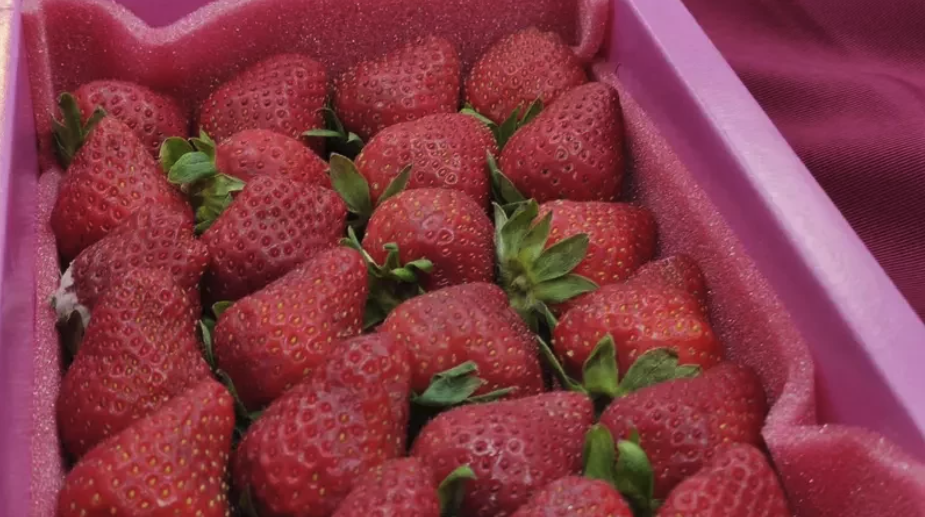Only 20% of the pesticide residues in strawberries imported from Japan are qualified.
In January this year, the Consumer Foundation tested 12 pieces of locally produced and imported strawberries. Only Korean strawberries did not detect pesticide residues, and one to 17 pesticide residues were detected in the remaining 11 pieces of strawberries, of which six did not meet the agricultural residue tolerance standards. the overall failure rate was 50%. If the origin is broken down, the failure rate in Japan is even as high as 80%. The biggest problem is that imported strawberries have not been continuously monitored after they entered the market.

Huang Yiteng, chairman of the Consumer Foundation, said that in January this year, the Consumer Foundation conducted samples from local stores, supermarkets, fruit shops, traditional markets, dusk markets, and other sales channels. Six pieces of local strawberries, five pieces of Japanese strawberries and one piece of Korean strawberries were purchased, totaling 12 pieces.
Hu Fengbin, publisher of the Consumer Foundation, said that if the producing area is broken down, the qualified rate of local strawberries is 66.7 per cent, Japanese strawberries 20 per cent and Korean strawberries 100 per cent. In other words, the failure rate of Japanese strawberries is up to 80%.
According to the statistics of the Food and Drug Administration, 19 strawberries were not up to standard in the border inspection in ○ and ○, 21 strawberries in ○ 2021, and 11 strawberries in the year to February this year, of which 39 were Japanese strawberries.
Hu Fengbin ridiculed that Health Minister Chen Shizhong opened up for Fu Food last month, stressing that Japanese management was recognized by the world. If radiation was detected to exceed the standard, he would ask Japan to come up with improvement methods and then talk about import details. But judging from the test results, the failure rate of strawberries imported from Japan was as high as 80%. "is this kind of management recognized by the world?"
Ling Yongjian, chief inspector of the Consumer Foundation, explained that the biggest problem this time is almost all border inspection, and it is reasonable to suspect that follow-up market monitoring has not tested strawberries. I am afraid it is a relatively big loophole.
Yesterday was the 11th anniversary of the Fukushima nuclear disaster. A press conference held by the Green Consumer Foundation and other civilian groups said that 11 years later, Japan is still suffering from the nuclear disaster, but our country imports food from the nuclear disaster areas in Japan, but the domestic sampling capacity is insufficient and the sampling proportion is low. Worried about a big increase in radiation exposure.
The Food and Drug Administration said that recently, the situation of pesticide residues in strawberries in Japan is relatively serious. Since February 22 this year, a "batch inspection" check has been launched to destroy or transfer unqualified strawberries to countries that meet the inspection standards. It is expected that this measure will be implemented for half a year.
- Prev

Israel grows palm-sized world's largest giant Ylang strawberries, each weighing a record 289 grams
Chahi Ariel, a farmer in Kadima, Israel, planted a giant strawberry in his strawberry garden in 2021. It weighs 289 grams, five times the weight of ordinary strawberries. It is like several strawberries fused together to form a fan shape. It is 18 cm long and 4 cm thick.
- Next

Amazon self-driving company Zoox acquires Strio.AI, a new robot entrepreneur for strawberry harvesting
, which is now the Zoox of Amazon's self-driving company, earlier announced the acquisition of Strio.AI, a new robot entrepreneur that builds strawberries, and is expected to integrate its technology into its self-driving design.
Related
- A one-day flower show brings 130 million yuan in orders! Nanhai, this Phalaenopsis exhibition is amazing
- What do the flower language and meaning of Lutheran tree mean? Precautions for planting Lutheran tree
- Encounter Chaoshan Kongfu tea, not without this cup of Phoenix single clump
- The durian market in Vietnam and Thailand is flooded. The price of imported durian has plummeted by 30-40% in a month.
- Shanghai solved the problem of local vegetable supply by planting 80,000 mu of green leafy vegetables.
- Wageningen University has become the best agricultural university in the world for the seventh time in a row.
- The strongest export season of South African grapes is full of challenges, with exports to Russia falling sharply by 21%.
- Sri Lanka is on the verge of bankruptcy, "Tea for debt" Organic Agriculture Revolution aggravates the Food crisis?
- Turning waste into earthworm manure and worm manure into organic fertilizer-A new choice for auxiliary farming
- Organic rice growers shoulder the responsibility of nurturing agricultural talents! Yinchuan Sustainable Farm with Organic Life Camp

